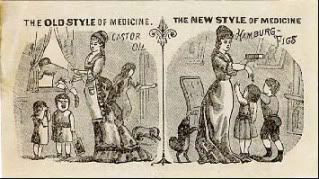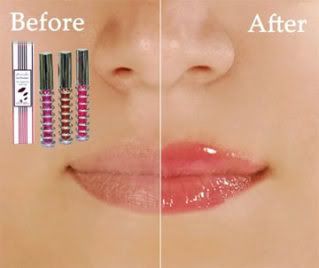Ad Nauseam now at Wordpress
I've moved all of Ad Nauseam to Wordpress. Nothing against Blogger -- it's a great package -- but there were templates at Wordpress I liked better than the somewhat limited selection here.
Writing about advertising since 1994
I've moved all of Ad Nauseam to Wordpress. Nothing against Blogger -- it's a great package -- but there were templates at Wordpress I liked better than the somewhat limited selection here.
I should come clean and admit that this post is appearing in both Ad Nauseam and Editor's Sidebar since it deals with both advertising and editing.


"After that I applied for [name of college] and had to write a English test to get in and believe it or not I passed with an excellent mark they even called me to welcome and congratulate me into the program, yeah I was just as surprised as you" (personal essay from student, aged 23)
The profound illiteracy and lack of general knowledge with which we're faced on a daily basis is disturbing -- not to mention debilitating to our motivation. The multi-billion dollar educational system is a sham, and we know it; but there's nothing we can do about it. Too much has been invested in the philosophy, and those most fully indoctrinated in it (public and high school teachers) are hardly likely to suddenly admit it's all been a big mistake. Meanwhile, those of us with the least indoctrination are in the post-secondary institutions, and therefore unable to bring about meaningful change where it would do the most good -- in the lower grades when students' minds are still open to learning.
Upon using the client's product or service, the consumer is overcome with an inability to function in a normal fashion. He or she (generally he) becomes incapable of normal social interaction, loses all interest in sex, and is often oblivious to physical danger.
Is it even necessary to spell it out? Maybe there's a point to portraying those who don't use your product as stupid, although perhaps insulting the people you're trying to seduce has its drawbacks. But where is the logic in making your own customers look like idiots?
A series of natural taps, bangs, or other sounds combine to form a tune or distinct rhythm.
While there's nothing wrong with the actual concept, making it work takes real genius, and there's just not a lot of that going around. The Maxwell House ads succeeded because the tune was catchy and the creation of the tune (a percolator) was directly tied to the product. None of the ads since have managed to pull off the same formula. Until they do, it's time to put this one to bed.
In an honest recognition that the company's product has been inferior in the past, these commercials ask the consumer to give it another shot, with the promise that it has vastly improved.
While it may seem like a good idea to be honest and admit to past failures, in real life it seldom does anything more than remind everyone about your past failures. More importantly, those coming to your brand with no previous knowledge of its past performance will learn to distrust it from your own ads. Your best bet? Improve the product from the ground up, then start advertising it on its features. Ignore the past.
That's it for this edition of Best Before. We'll have another in the future. If you have any suggestions for campaign concepts that really need to be taken down from the shelf, feel free to e-mail them to me. I'll give full credit.
Read more...In this semi-regular feature we celebrate those unsung heroes of the marketing world who, faced with products that seemed impossible to market, succeeded in defying the odds to create highly successful campaigns.

I should be upfront and admit that I don't like Oprah. I can't say why, exactly. Maybe it's her ostentatious displays of generosity. Maybe it's her insistence that everyone show exactly the same upbeat attitude she purports to have. Maybe it's the feeling that her conversion from shock-show host to moral leader of the multitudes and maven of modern literature was predicated on sagging ratings. Maybe it's just that I distrust anyone who can sway the feelings and opinions of millions of people.
Whatever the reason, it certainly isn't because I feel she has somehow personally betrayed me.
Unfortunately, the same cannot be said of her social network followers.
The Silicon Valley Insider reports that although she's only been Tweeting for a shot period of time, and boasts one of the largest followings, "she is already bored" with the experience. "In total, she's sent 20 tweets in 11 days. Almost half are from April 17, Oprah's first day on Twitter, when Ashton Kutcher and Twitter CEO Evan Williams appeared on her show ."1
This defection does not sit well with some. "The reason why Oprah lost on Twitter is because of her lack of commitment to engage her community," says Craig Daitch of Advertising Age.2 "She could give away a G6, sell subscriptions to her magazine and bring huge A-Listers to her show every day -- but being asked to participate in conversation is much different than being asked to spark conversation."
In other words, while these people once loved Oprah because she gives away millions of dollars for social programs, supports worthy causes, provides a role model for women, and encourages literacy, now they are turning against her because she's not spending enough time keeping them updated on her latest meal.
Of course, this backlash is quite mild and unlikely to affect her overall status as the Woman God Sent to Straighten out the World. But in a nutshell, it illustrates one of the most serious problems posed by social network marketing: When your product or service becomes a member of a community, its value becomes dependent upon its participation within that community. As part of the "consumer conversation," so beloved of modern marketers, what it says counts for much more than what it actually does.
It no longer matters how well your product cleans dishes, kills germs, improves your looks or handles on the road, once it's part of the great communal conversation the only thing that counts is how well it can talk. While consumers of old (read, 20 years ago) might have become annoyed if their pain reliever didn't work, modern consumers are ready to become personally insulted at a misguided, but transient commercial on TV: as Motrin found out to their chagrin. 3 The Motrin ad, which incautiously spoke about Moms wearing babies in slings as a fashion accessory, was released as a viral campaign, and the resultant viral backlash turned into a digital pandemic. Those who would otherwise never have seen the offending video were told about it (with links) by their community members and encouraged to take part in the outcry. In trying to join the online community, the company found itself outcast, reviled, and with a large scarlet letter sewn on its chest.
Of course, if it hadn't taken its campaign online, those who felt the need to be offended would still have been able to blog and Twitter about it, and this kind of adverse publicity can attain a critical mass on occasion. In general, however, the isolated nature of these outlets keeps nuisance complaints limited and relatively harmless. But when the company voluntarily either creates or joins a social network, it provides a central pavilion in which every crackpot with an axe to grind can bring his soapbox and be heard. Furthermore, because of the direct connection between the platform and the company, those who gather within it have a natural expectancy that they should be heard and responded to.
Businesses have always had the responsibility to deal with customer complaints and listen to unsolicited suggestions. That's how companies grow. But the social marketing sphere is an echo chamber which so magnifies every casual and meaningless comment that the resultant din can threaten the company's very foundations -- like a digital version of Joshua's trumpeters bringing down the walls of Jerico.
Whatever benefits there may be in marketing through social media, and to date the success stories are still vastly outnumbered by the failures, when things go wrong, they do so in a spectacular fashion.
I've said it before, but it bears repeating: Social network marketing is like sending a company salesman into a Friday-night frat party, and it's not exactly surprising if he gets stripped to his underwear, hung upside down, and covered in beer.
1. Fromm, Dan (2009, April 28).Oprah already bored with Twitter. Silicon Alley Insider, Retrieved April 30, 2009. [Return to text]
2. Daitch, C. (2009, April 28).@Oprah already bored with Twitter? So what?. Siilicon Alley Insider, Retrieved April 30, 2009. [Return to text]
3. Havenstein, H. (2008, Nov. 18). Motrin maker feels pain from social media backlash. TechWorld, Retrieved April 30, 2009. [Return to text]
Read more...


Earlier this month one of the most important events in social network marketing took place when the New Advertising Directions Symposium was held in Chicago. Here, in its entirety, is the story from The New Marketing magazine.
 Walter "The Buzz" Vaine, president, NADS |
This discrepancy between the new and old generations was apparent from the moment Walter (The Buzz) Vaine, president of NADS, strode out to greet the crowd, none of whom appeared to be over 35.
“The Old Guard were all about ‘effectiveness’ and ‘sales,’” said Vaine. “We now know that our job goes far beyond these primitive goals, reaching out to the very consciousness of the consumer. No longer do we measure our results in the number of widgets, whatnots, or whatevers that our campaigns sell; instead we look for the ‘conversation,’ the ‘buzz,’ and the ‘insight.’ It is our job to e-enable real-time communities and matrix interactive experiences.
"Or to put it another way, as the motto of the New Advertising Directions Symposium says: ‘The old school had guts, but we’ve got NADS!’”
One of the bold new concepts of the New Marketing is the “Brand Footprint.”
“The brand is everything,” said Vaine. “Rid yourselves of the obsolete idea that consumers are interested in the product. They’re not; they’re interested in the brand, as our research has repeatedly proven. Every time we ask them brand-related questions, whether it be in focus groups, electronic surveys, or on-site questionnaires, consumers invariably respond with brand-related answers. It is the brand, not the product, that we want strutting through their consciousness — and the bigger the footprint it leaves behind, the better.”
The Brand Footprint has become one of the fastest-growing ideas in the marketing industry. While conventional advertising concentrates on making products stand out by drawing attention to their features, the Brand Footprint concentrates on promoting the brand itself, often to the exclusion of the actual product.
“In the Brand Footprint,” Vaine explained, “information about a specific product represents, at the most, the little toe, whereas the ‘sole,’ if you will, consists of the branding. And one of the key points of branding is to keep the brand fresh. Clients have a tendency to become comfortable with a particular name, for example. You need to shake them out of it. Consider the great campaign presently being done changing the name of Electrosol to — well, I can’t remember right now. But that’s a campaign that is doing its ad agency proud.”
Another approach much valued by the New Marketers is Social Marketing, which employs various online social networks such as Facebook and Twitter.
“Whenever you have people talking,” Vaine told his listeners, “you have the chance to walk through their conversations and leave your footprints behind. People join these sites to socialize, but as we can tell by the meandering nature of their conversations, they’re in desperate need of something interesting to talk about. That’s where we come in.”
The three-day conference featured a host of speakers lecturing on a variety of New Market topics. These included William Leakey on, “Making Them Guess: Engaging Consumers Through Ambiguity”; Jill Whedon, who spoke on “Conversing with the Twits: The Strength of Social Marketing”; and Richard Baylee who drew the most enthusiastic response with his seminar, “The ROI is Dead, Long Live the Conversation,” in which he extolled the “democratization of the marketing process.”
The symposium, as befitted the subject matter, was promoted through social marketing. The Facebook page, “Sign up now for NADS,” had 105,492 friends, and “NADSinApril” on Twitter had 78,345 followers. As a result of this promotion, the number of attendees could barely squeeze into the symposium’s meeting place in the basement of St. Mary’s Baptist Church, which only has seating for 45 people.
When asked if we could expect to see another symposium in the future, Vaine said, “With a social-networking promotional success like this, I think you can count on it.”
 Vacuum packed shit to seal in fresheness Vacuum packed shit to seal in fresheness |
And then these odd, French-only V8 posters mysteriously began to appear in downtown Toronto.
Reprinted from Ad Nauseam, June 14, 1994 Anglophone Canadians trembled recently when Lucien Bouchard revealed a secret American plan to annex Western Canada in the wake of Quebec separation. And while the Bloc Quebecois Leader later denied making such statements (by arguing "I would be crazy. Am I crazy? Am I crazy? Do I look crazy?"), his skilled rhetoric came too late to quell Anglo anxieties.
Anglophone Canadians trembled recently when Lucien Bouchard revealed a secret American plan to annex Western Canada in the wake of Quebec separation. And while the Bloc Quebecois Leader later denied making such statements (by arguing "I would be crazy. Am I crazy? Am I crazy? Do I look crazy?"), his skilled rhetoric came too late to quell Anglo anxieties.
I only bring this up because in the past week I've seen not one, but three French-only V8 advertisements in the Wellesley/Yonge/Church streets area: an obvious bid to placate French-speaking vegetable juice drinkers.
Nevertheless, such a translation makes sense as a ploy to hold onto Quebec. Rich French cooking has been known to cause gout; V8 prevents gout. Subtextually, what the ads are saying is that no matter what Quebec wishes to dish up, we'll eat it.
It's this kind of unambiguous sloganism that has worked so well in the past to bring about thoughtful and nuanced political decisions.
Nor should we, as do some, take lightly the threat of separation. While many commentators have pointed out various problems that could arise should Quebec choose independence, M. Bouchard has, in fact, openly stated what the rest of us have hardly dared think: that with Quebec gone there would be nothing to prevent an American invasion. Surely even the most politically naive have known the only reason Canada has not already been annexed by the States is because they have no wish to be saddled with the problem of Quebec nationalists.
And so it is that we salute V8's selfless effort to do its part in keeping Canada together. I'd like to end with one of those rousing French slogans, but I just called my translator and she still hasn't determined Bouchard's mental stability.
Some mysteries may never be solved.
Once you've dropped them into a few insulting ads for adult diapers, life insurance, and Viagra, when it comes to marketing, the only thing Baby Boomers are good for is comic foil in commercials aimed at the real market: the under 30s.
Due to a determined effort to release my library of 5,000 books from their boxes onto shelves, along with increased teaching demands, Ad Nauseam will be on hiatus for a couple of months.
The following is a reprint of the Ad Nauseam column which appeared in the December 30, 2008 edition of the Metaverse Messenger.
While marketing is important, we should always keep in mind its cost to culture. News shows are cluttered with spots which amount to little more than promotions of consumer goods; snack food advertisement has been credited with the increase of obesity among children; and educational institutes have find themselves engaging in various degrees of product placement in return for funds.
But nowhere is the influence of marketing felt stronger than when the commodity being marketed is the culture itself. This can clearly be seen in the case studies of two separate cultures which, as a marketing device, turned to their own heritage.
“Admittedly, tea has always played a large and important role in our culture,” says Earl Bergamot, one of the Tetley Tea Folk’s most prominent citizens, “but over the last few decades it has grown out of all proportion. The only things tourists are interested in these days are the tea-related items: handcrafted tea-pots, coasters, strainers — that sort of thing. Sometimes they’ll pick up a couple of the ankle bells we wear for traditional dances, but only because they’ve seen us dancing on TV.”
Artisans who create the in-demand items find themselves doing a thriving business, and certainly no one is complaining about the much-needed infusion of foreign dollars into the economy. The downside, however, is that many of the other, and equally important, traditional art forms have gone into serious decline.
“Our religious artefacts have all but disappeared,” mourns Bergamot. “I think there are only two artists still producing black-velvet paintings. Our heritage is suffering.”
The second case study involves a culture forced to reinvent its history in order to disassociate itself from characteristics which may not be conducive to the marketing of its products.
“We’re supposed to be cute, ya know?” says Shop Steward Ernest J. Keebler of the Keebler elves; but the cigar-waving figure seated across from me in the office of a large cookie factory is a far cry from his TV persona frequently shown gently encouraging his helpers.
The Keeblerites came into their cookie heritage many centuries back. Representing the losing faction in a civil war fought over labor issues in 1345 AD, they were exiled from the North Pole and forced to start a new society further south. But while they had little in the way of resources, they refused to compromise their most precious principle. “We work, we get paid!” says Ernest, summing up the Keebler philosophy. “It’s as simple as that. We didn’t give in to the f---ing fat man in the red suit and we’re sure as hell not going to give in to anyone else!”
Upon founding their new country in 1347, they were then faced with the challenge of finding a new line of work.
“All we knew was, like, wooden toys, see?” says Ernest, laughing. “Then when the plague started breaking out all over Europe we figured: what the hell — let’s make cookies.” Starting from scratch was no easy task, however.
“Of course, we didn’t know the first thing about cookies, and all our early recipes called for a lot of saw-dust.” Ernest leans forward conspiratorially. “We still make the saw-dust cookies,” he says with a smile. “We just sell ‘em to the dorks in the health food store. It’s amazing what those guys will buy!”
But public image isn’t the only problem facing the Keeblerites. Once a year, after the filming of his popular television, the Cookie Monster beats his annual, month-long retreat to the Keebler valley.
“Man, oh man!” groans Ernest. “When that guy hits town we all know it. And when he brings that a--hole friend of his, Barney, it takes us a full month just to fix the place up again.”
While solutions may yet be a long way off, simply acknowledging the problem is a step in the right direction. The question is, will the cultures be around long enough to benefit?
The pathos of the situation was brought home to me at the end of my interview with Tetley Tea’s Earl Bergamot. The solemn little man took me into a local church and pointed out an empty alcove. “Until it was broken a few years ago,” he said, “there used to be a beautiful plaster-cast bust of Elvis in that space. It still hasn’t been replaced.”
He shook his head sadly. “Our culture is dying.”

© Blogger templates The Professional Template by Ourblogtemplates.com 2008
Back to TOP